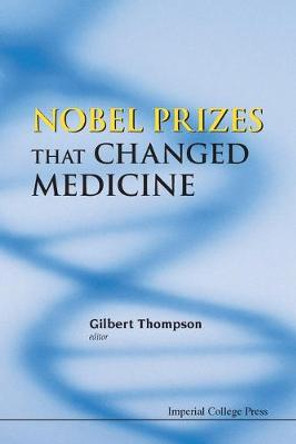Description
Biotechnology harnesses cellular and biochemical systems to advance knowledge of the molecular cause of disease and to provide new diagnostic tools and more precisely targeted drugs. Within a decade, global investment in medical biotechnology has increased more than ten-fold, resulting in therapies for previously untreatable conditions. But what exactly is biotechnology and what are its origins? What further benefits to human health could it offer in the future?
Written in an accessible style, contributors to this book explore the history behind different biotechnology tools, how they are used, and how they are reshaping the future of diagnostics, therapeutics and vaccines. Among the technologies examined are genetic engineering, DNA sequencing, monoclonal antibodies, stem cells, gene therapy, cancer immunotherapy and the most recent newcomer - synthetic biology.
Applying new biotechnologies in medicine is not without great challenges. As medicines shift from small organic molecules to large, complex structures, such as therapeutic proteins, drugs become difficult to make, administer and regulate. This book will intrigue anyone interested in medicine and how we have been, and may continue to, engineer better health for ourselves. Such changes have major implications for how and where drugs are manufactured, the cost of medicine and the ethics of how far society is prepared to go to combat disease.
Reviews
What is biotechnology? This simple question is very hard to answer in a few words.
If you define the term broadly, such as manipulation of biological systems to obtain useful products, you would capture the entire history of agriculture along with traditional technologies like brewing and baking. If you approach it with very specific definitions, it will splinter into numerous subdisciplines, including molecular biology, cellular biotechnology and synthetic biology, which again contain quite diverse subsets.
To stay focused on modern developments, one could define biotechnology as the set of successful developments growing out of the major revolutions in 20th century molecular and cellular biology, including the techniques to sequence, synthesise and edit DNA, monoclonal antibodies, stem cells and cloning.
However, owing to the complexities of dealing with biological source material and applications frequently aimed at human disease, the approach often must be a pragmatic 'whatever works', until something else comes along that works better. Thus, pig insulin was replaced by recombinant human insulin produced in bacteria.
The forgotten 19th century invention of serum therapy was reborn with molecular specificity when methods to produce monoclonal antibodies were invented. The monoclonals themselves are now at risk of being replaced by more compact molecules such as the nanobodies derived from the single-chain antibodies that are naturally found in camels and their relatives.
Marks, a historian of medicine at University College London, is the editor of the website What Is biotechnology? (whatisbiotechnology.org), which was set up as a non-profit organisation to improve public understanding of this field.
Out of her work for the website grew this book, to which she contributed the introduction as well as chapters on antibodies and on cancer immunotherapy, while experts from various universities and research institutes wrote chapters on issues including vaccines, gene therapy, stem cells, eye disease and synthetic biology.
The fact that the chapters appear to be categorised along different coordinates - some cover a type of disease, some a type of cure, some a research approach - underlines the difficulty of systematically describing what biotechnology is. As the slices are cut in different directions, overlaps between chapters are inevitable.
Considering this fundamental difficulty, the book has turned out surprisingly readable, with Marks' own chapters being very accessible and lay-friendly.
The book impresses with 19th and 20th century historical connections to things that are topical today, although some important twists of the early 21st century are missing, including how second-generation sequencing overcame the fundamental limitation of the Sanger method, and the already-mentioned camel antibodies. The answer to the question of what biotechnology is will inevitably change as research moves on.
* Chemistry & Industry Magazine, Issue 05, 2018 *The book has turned out surprisingly readable, with Marks' own chapters being very accessible and lay-friendly. The book impresses with 19th and 20th century historical connections to things that are topical today.
* Chemistry & Industry Magazine, Issue 05, 2018 *Book Information
ISBN 9781782620846
Author Lara Marks
Format Paperback
Page Count 280
Imprint Royal Society of Chemistry
Publisher Royal Society of Chemistry
Weight(grams) 420g










